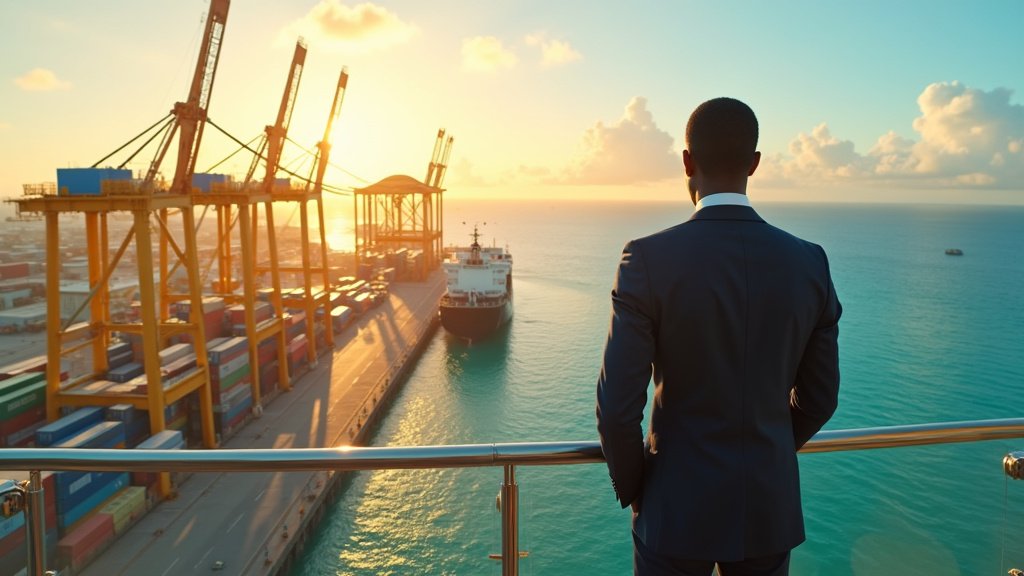Jamaica, an island nation celebrated for its vibrant culture and natural beauty, is in the midst of a profound economic transformation, striving to overcome persistent challenges and establish itself as a dominant force in global logistics. This journey, often described as ‘the grind behind the glory,’ involves strategic infrastructure development, robust government support for local enterprises, and a determined push to rebalance its trade landscape.
The Lingering Trade Imbalance
Recent economic news from Jamaica underscores the uphill battle against a significant trade imbalance. Between January and March 2025, the island’s imports surged to US$1.89 billion, representing a 1.6 percent increase compared to the previous year. Conversely, export revenues declined by 1.9 percent, falling to US$485.2 million. This substantial disparity reflects a long-standing pattern where Jamaica consistently spends far more on imports than it earns from exports.
Data from January to February 2025 further highlights this trend, with the trade deficit widening by 5.6 percent to US$1.01 billion. Imports, totaling US$1.32 billion, were primarily driven by increased spending on raw materials, intermediate goods, and consumer goods. The decline in exports, amounting to approximately US$306.20 million, was largely attributed to a sharp 41 percent decrease in the value of mineral fuel exports. While some domestic exports, particularly from mining, quarrying, and agriculture, showed modest growth in early 2025, the overall picture reveals a nation reliant on external goods.
Reinvigorating the Manufacturing Sector
The challenges extend to Jamaica’s manufacturing sector, whose contribution to the Gross Domestic Product (GDP) stood at 7.75 percent in 2024. This figure reflects a sector grappling with a range of impediments, including high energy costs, bureaucratic hurdles, limited access to financing, and insufficient investment in modern technology. The need for retooling and increased productivity is paramount for local businesses to enhance competitiveness and reduce reliance on imports. Despite these obstacles, the manufacturing sector is recognized as crucial for fostering exports and driving import substitution, vital steps toward economic self-reliance.
Anchoring the Global Logistics Hub Initiative
Central to Jamaica’s transformative agenda is the ambitious Jamaica Logistics Hub Initiative (LHI), designed to capitalize on the expanded Panama Canal and leverage the island’s strategic geographic location. A cornerstone of this initiative is the US$80-million Westlands Expansion Project at the Kingston Freeport Terminal (KFTL), a collaborative effort involving the Port Authority of Jamaica (PAJ), KFTL, and CMA Terminal Holdings.
This vital project, whose groundbreaking ceremony was held in July 2025, aims to significantly bolster Kingston’s role as a leading transshipment hub. The expansion will add 15 hectares to the port, increasing cargo capacity by 25 percent and reducing vessel waiting times. Key enhancements include new storage facilities, upgraded security measures, and the implementation of a modern, highly automated domestic gate system, all designed to streamline cargo processing and attract new international business. KFTL, a subsidiary of the global shipping giant CMA CGM Group, operates the terminal under a 30-year concession agreement, further cementing international partnerships in this strategic endeavor.
Broadening Support for Local Producers and Infrastructure
The government’s commitment to fostering economic growth extends beyond the port. An ambitious infrastructural development agenda for the 2025/2026 fiscal year includes significant investments in road networks and water systems, such as the J$45-billion SPARK Project for roads and water infrastructure and the ongoing Southern Coastal Highway Improvement Project. Prime Minister Andrew Holness has emphasized that these major infrastructure projects must also serve to build the technical and professional capacity of Jamaican workers through skills transfer and training, ensuring long-term national development.
Recognizing the critical role of Micro, Small, and Medium-sized Enterprises (MSMEs), the government is implementing initiatives to provide essential support. This includes identifying land for ‘Turnkey Community Micro-Business Parks,’ with the first slated for Morant Bay, to offer MSMEs the necessary infrastructure like warehousing and commercial spaces. Furthermore, the Social Development Commission (SDC) continues to empower grassroots entrepreneurs through its Local Economic Development (LED) and Special Entrepreneurship Grants, having disbursed over $61.7 million to more than 1,000 small business operators across the island. A new ‘Local First’ policy in the tourism sector also mandates partnerships with local communities, ensuring that economic benefits from large-scale projects directly impact local economies and suppliers.
The Path to Inclusive Growth
These multifaceted efforts are encapsulated in Prime Minister Holness’s ‘The Next Chapter: Pivot to Inclusive Growth’ strategy, unveiled in November 2024. This comprehensive plan focuses on human capital development, economic diversification, robust infrastructure, reduced red tape, and enhanced safety and security, all aimed at achieving sustained and inclusive growth for all Jamaicans.
As Jamaica navigates the complexities of global trade and seeks to build a more resilient economy, the synergy between large-scale infrastructure projects and targeted support for local businesses is crucial. The collective grind of these initiatives, coupled with a clear vision for transformation, aims to pave the way for a more prosperous and globally competitive Jamaica.

